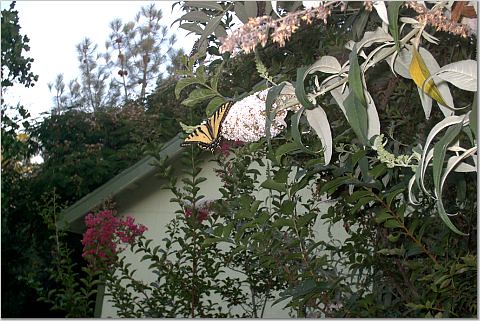The Handbook of Nature Study does not have any information on the earwig but it is a great insect to identify the parts of an insect with. I knew what kind of insect it was so we did a quick internet search and found loads of information about it.
We also found a millipede which we quickly discovered was *not* an insect. It is an invertebrate. You can find an illustration of a millipede and a caption about it on pages 448-449 of HNS.

We also found a tarantula in our garage, dead and stiff. This made for some interesting observations. At first I was horrified by its appearance but then, after I knew it was dead, I was able to observe its parts and really see it up close. I don't care to do that too much but it was interesting this one time. :) So even though it technically isn't an insect, we did learn something about tarantulas.
Here's what the Handbook of Nature Study says on page 435-436:
"There is an impression abroad that all spiders are dangerous to handle. This is a mistake; the bite of any of our common spiders in not nearly so dangerous as the bite of a malaria-laden mosquito. Although there is a little venom injected into the wound by the bite of any spider, yet there are few species found in the United States whose bite is sufficiently venomous to be feared. With the exception of the tarantulas of the Southwest, and the hourglass or black widow, which seems now to be extending its range from the South, the spiders of the United States are really as harmless to handle as are most of our common insects."
Believe me, I will not be handling any tarantulas in the near future. :)
We are wrapping up the focus on insects and we will be moving on to mammals for now. I am sort of excited to start since I know we are going to learn so much about what has been under our very noses and we have missed it.
Barb-Harmony Art Mom



















